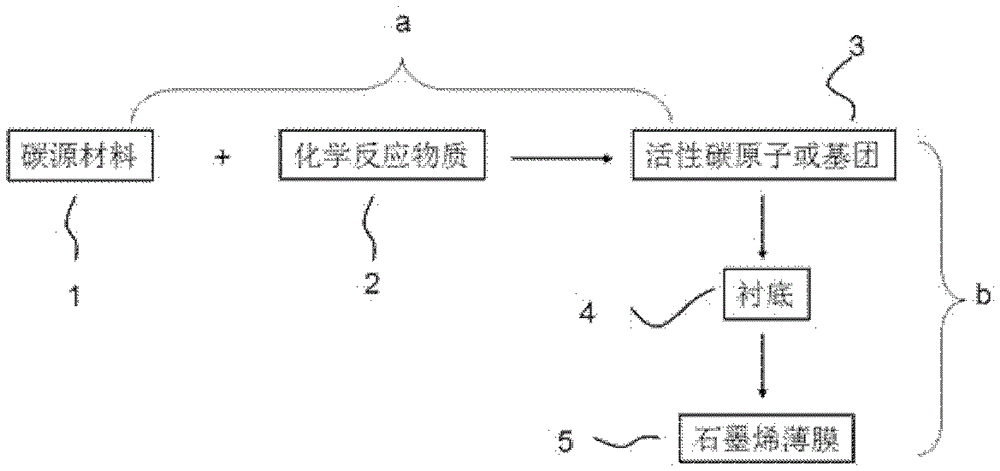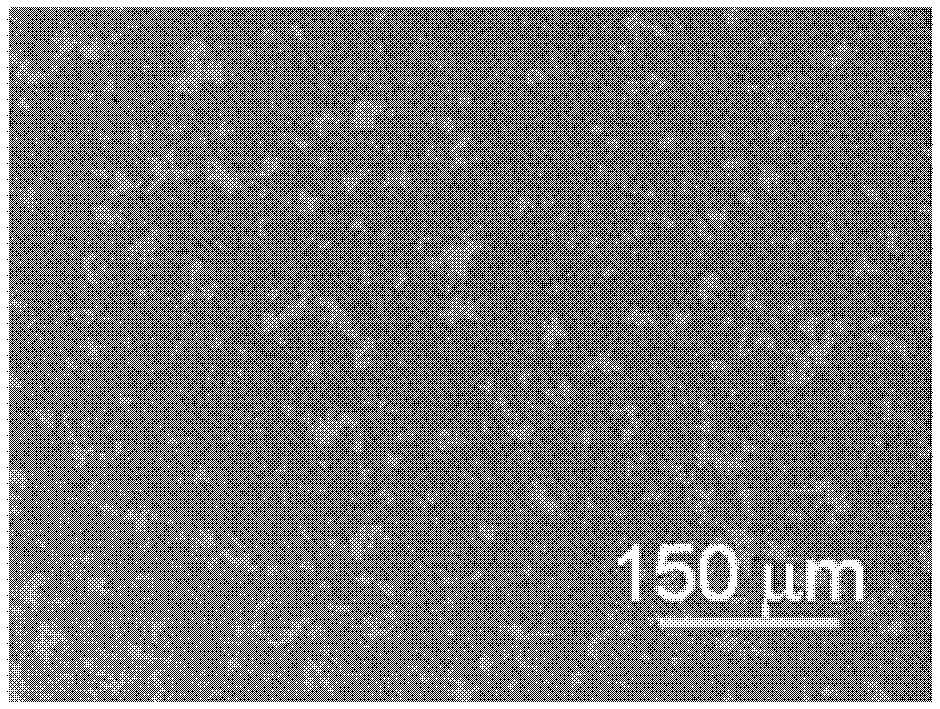Method for synthesizing graphene film by chemical reaction
A technology for chemical reaction and synthesis of graphite, applied in the field of graphene film synthesis, can solve problems such as poor electron transport performance of graphene film, and achieve the effects of expanding selectivity, wide source and simple method
- Summary
- Abstract
- Description
- Claims
- Application Information
AI Technical Summary
Problems solved by technology
Method used
Image
Examples
Embodiment 1
[0029] Embodiment 1: the ionization of alcohols grows graphene film on Si (100) substrate
[0030] Include the following steps:
[0031] 1) Alcohol is dissociated into carbocations under the catalysis of Lewis acid (Lewis acid), and the reaction process is:
[0032] R-OH+H + →R + -OH 2 →R + +H 2 O, where R stands for C n h 2n+1 (n≥1).
[0033] 2) Put the Si(100) substrate in the above reaction solution, and the generated carbon-containing ions R + Adsorbed on the silicon substrate;
[0034] 3) will be adsorbed with R + The substrate is taken out from the solution, and then this substrate is placed in a quartz tube;
[0035] 4) Pass hydrogen to the quartz tube and heat-treat at 930°C for 10min, and finally drop to 20°C at a cooling rate of 50°C / min to obtain a graphene film with a thickness of about 17nm ( figure 2 ).
[0036] Effect: The chemical reaction that produces active carbon atoms or carbon-containing active groups includes but not limited to heterocleava...
Embodiment 2
[0038] Embodiment 2: Taking non-polar carbon-containing compound as raw material method to synthesize graphene film
[0039] Include the following steps:
[0040] 1) Use superacids to extract negative hydrogen ions from non-polar compounds such as alkanes to generate carbocations. The typical process of this type of reaction is:
[0041] (CH 3 ) 3 C-H+SbF 5 ·FSPO 3 H→(CH 3 ) 3 C + +SbF 5 ·FSPO 3 - +H 2
[0042] 2)(CH 3 ) 3 C-H and SbF 5 ·FSPO 3 H undergoes a chemical reaction to form (CH 3 ) 3 C + After carbocations, guide the reaction product onto the Ni polycrystalline substrate;
[0043] 3) Then in H 2 In the atmosphere of / Ar, heat treatment at 1000°C for 10 minutes, and finally reduce the temperature to 25°C by 40°C / min, so that graphene with a thickness of 0.335nm was obtained on the Ni substrate; image 3 is the Raman spectrum of the synthesized graphene.
[0044] Effect: The chemical reactions that produce active carbon atoms or carbon-containing ...
Embodiment 3
[0046] Embodiment 3: the addition reaction synthesis graphene film of unsaturated bond
[0047] A typical reaction process is: R-C=R'+H + → R-C-R'H (R is an alkyl group, R' is O, C, N, S) includes the following steps:
[0048] 1) After reacting alkenes such as butene with acids such as HCl, CH 3 -CH 2 -CH=CH 2 +H + →CH 3 -CH 2 -CH 2 -CH 3 , transfer the reaction product to the polymer polyethylene terephthalate (PET) substrate;
[0049] 2) Then electron beams are used to process the reaction product on the PET. During the treatment, the temperature of the PET substrate is kept at 100°C, and the processing time is 3 hours; finally, the temperature is lowered to 25°C to obtain graphene with a thickness of 50nm film( Figure 4 ).
[0050] Effect: The chemical reactions that produce active carbon atoms or carbon-containing active groups include but are not limited to heterocleavage of halogenated hydrocarbons. Alcohols, ethers, and acyl halides can also be dissociated i...
PUM
| Property | Measurement | Unit |
|---|---|---|
| thickness | aaaaa | aaaaa |
| energy conversion efficiency | aaaaa | aaaaa |
Abstract
Description
Claims
Application Information
 Login to View More
Login to View More - R&D
- Intellectual Property
- Life Sciences
- Materials
- Tech Scout
- Unparalleled Data Quality
- Higher Quality Content
- 60% Fewer Hallucinations
Browse by: Latest US Patents, China's latest patents, Technical Efficacy Thesaurus, Application Domain, Technology Topic, Popular Technical Reports.
© 2025 PatSnap. All rights reserved.Legal|Privacy policy|Modern Slavery Act Transparency Statement|Sitemap|About US| Contact US: help@patsnap.com



